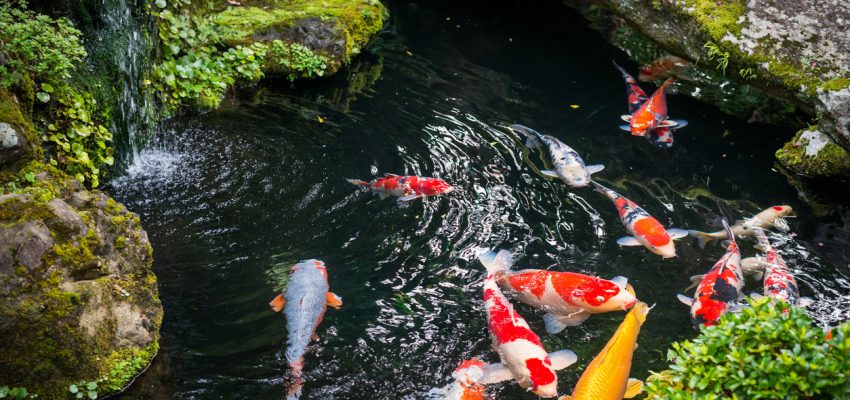A pond can really make your garden pop. Not only does it up the Zen factor, but it also provides a vital oasis for birds, small animals and insects. Ponds are relatively easy to make and don’t require any special skills or tools, just a little imagination and a touch of whimsey.
Location, Location, Location…
Decide on the size and location of your pond. Be sure that you can mow around it, that it isn’t in a place where it can pose a danger. It should be situated where you can sit and enjoy it.
Shady areas are ideal as too much sun can cause algae to grow. Evergreen trees are great, but deciduous trees can cause the pump to clog when they lose their leaves in the winter.
Call your local gas and utility companies to ensure that your pond isn’t near wires or pipes. You don’t want to start digging and disrupt services.
Mark out your pond dimensions and get digging. Save any large rocks you find as they will help to secure the pond liner.
Adding the Pond Liner
Once your hole is dug, you’re ready to install your pond liner. These are readily available from your local hardware store. PVC pond liners are lightweight, durable, and easy to customize to the shape of your pond. They are UV protected so they should last for more than 20 years.
Simply place the pond liner in the hole, smooth side down, and secure the edges with rocks and soil.
If you don’t want to use a pond liner, you can use an old bathtub, kid’s pool, watering trough or anything that is water tight. See examples of upcycled ponds here.
Choosing the Right Pump
The addition of a pond pump will help you to keep your pond clean and means you can add a water feature like a fountain or waterfall. It’s important to get the right size pump for your pond and there’s no better place to start than with calpeda pumps.
You can estimate size using the following formula for square ponds:
Length x Width x Depth x 7.5 = total gallons
For circular ponds, use the following formula:
Length x Width x Depth x 5.9 = total gallons
If you aren’t sure about the size of your pond, get a pump that has a GPH (gallons per hour) rating that is at least half your pond’s size. If you want to ascertain how many gallons are in your pond, take a water meter reading before and after you start filling your pond.
Add some Fish!
If you’re landscaping in warmer areas like Daytona Beach FL, you can enhance your pond with lily pads and fish. Aquatic plants help to filter the water and keep the pH healthy while fish help to feed the plants. If you live in the country, your fish may fall prey to herons, king fishers and other birds. If you fund this is the case, a thin netting over the pond can help to protect your fish.
If you do want to add fish, your pond should be about 2 feet deep for zones 5. If you live in a colder area, make the pond deeper or get an aerator to reduce the risk of freezing. Koi ponds must be at least 3 meters deep.




